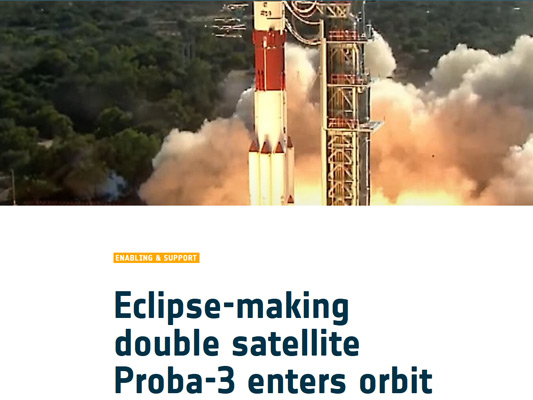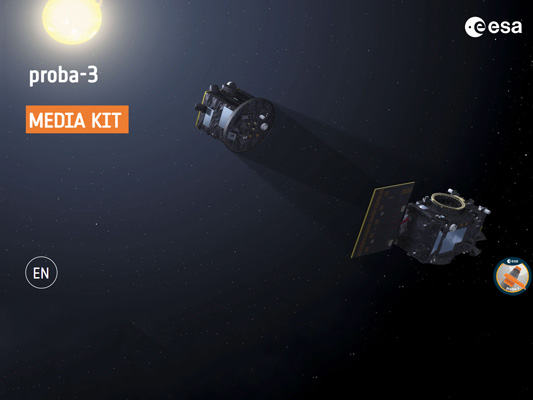Eclipse-making double satellite Proba-3 enters orbit
A pair of spacecraft were launched together today from India with the potential to change the nature of future space missions. ESA’s twin Proba-3 platforms will perform precise . . .
ESA, 5 Dec. 2024








